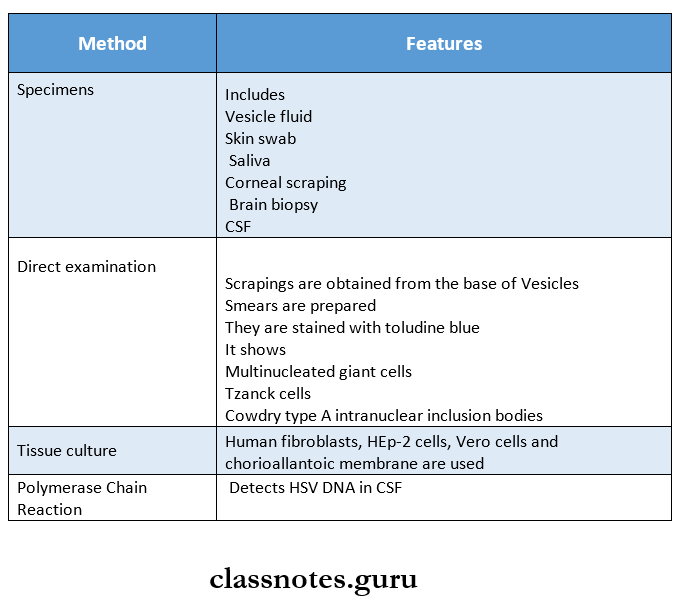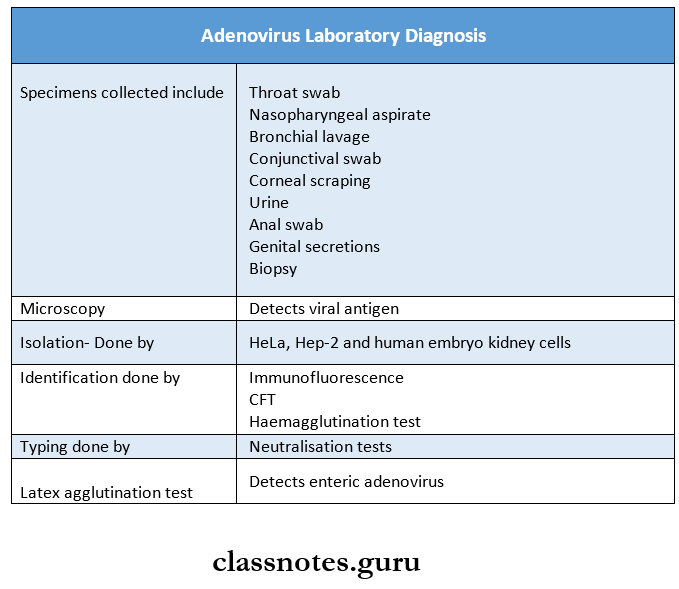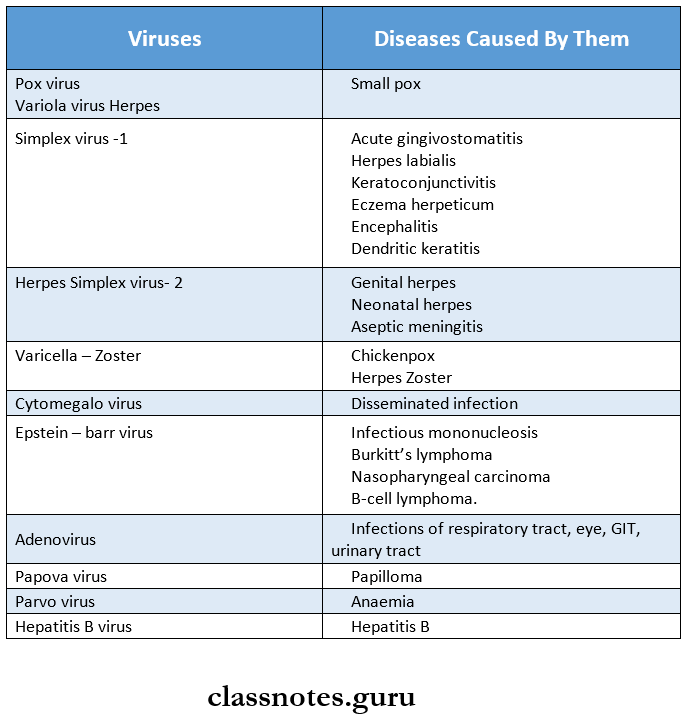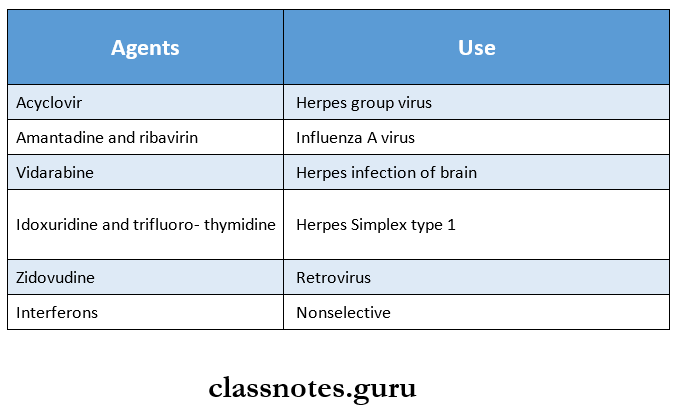DNA Viruses Important Notes
1. Herpesvirus Subfamilies:
- Alpha herpes virus
- Herpes simplex 1
- Herpes simplex 2
- Varicella zoster
- Beta herpes virus
- Cytomegalovirus
- Gamma herpes virus
- Epstein Burr virus
- Human herpes type 8
Read And Learn More: Microbiology Question and Answers
2. Infections Caused By Epstein-Barr Virus
- Infectious mononucleosis
- Burkitt’s lymphoma
- Nasopharyngeal carcinoma
DNA Viruses: Short Essays
Question 1. Herpes Virus
Answer:
The Herpes virus belongs to the Herpes viridian family
Herpes Virus Subfamilies:

DNA Viruses Short Essay Questions and Answers
Herpes Virus Morphology:
- Size: 100-200 nm in diameter
- It contains:
- Icosahedral caused containing 162 capsomers
- Double-stranded DNA genome
- It is surrounded by a lipid envelope containing peplomers
- The tegument is present between the capsid and the envelope

Herpes Virus Laboratory Diagnosis:
- It includes
- Collection of specimens
- Smear preparation
- Staining of the specimen
- Observation
- It shows Tzanck cells, Multinucleated giant cells, and Cowdry type A intranuclear inclusion bodies
- Tissue culture
- Polymerase Chain Reaction

Question 2. Herpes simplex virus?
Answer:
- It is a DNA virus
- It belongs to the Herpesviridae family.
- Man is the only natural host.
- Herpes simplex virus has two types as follows.
- Herpes simplex type 1 is usually associated with oral and ocular lesions.
- Herpes simplex type 2 is usually associated with genital infections.
- Lesions caused by herpes simplex depend on the site of infection, age and immune status of the individual as follows:
- Cutaneous infections: These include:
- Fever
- Blisters on the cheeks, chins around the mouth, or on the forehead
- Napkin rash on the buttocks of children, Herpetic warts in medical professionals.
- Eczema herpeticum:
- The generalised herpetic eruption is seen in children suffering from eczema.
- Mucosal lesions:
- Acute gingivostomatitis
- Recurrent herpes labialis.
- Ophthalmic lesions:
- Keratoconjunctivitis
- Follicular conjunctivitis.
- Visceral lesions:
- Nervous system:
- HSV meningitis,
- Sacral autonomic dysfunction.
- Genital lesions:
- Infection of the cervix, vagina, or vulva (females)
- Congenital lesions:
- Subclinical or localised infection of skin, mouth or eyes.
- Besides primary infections, herpes viruses may present as a latent infection, reactivation and recurrence.
Virology Notes on DNA Viruses
Herpes Simplex Virus Laboratory Diagnosis:

Question 3. Cytomegalovirus?
Answer:
- Cytomegalovirus is included in Herpesviridae family.
- It is a Human Herpes Virus 5 (HHV-5)
- The virus is shed in urine, saliva, semen, cervical secretions, tears and breast milk.
Cytomegalovirus Pathogenesis:
- Cytomegalovirus infections are almost always inapparent, leading to prolonged latency with occasional reactivation.
- Congenital infections:
- Cytomegalovirus can be transmitted transplacentally from a mother with la latent infection to the foetus.
- Infections are asymptomatic at birth, or) it may lead to cytomegalic inclusion disease, which is often fatal.
- Cytomegalovirus inclusion disease is characterised by:
- Hepatosplenomegaly.
- Jaundice
- Thrombocytopenic purpura
- Haemolytic anaemia
- Microcephaly.
- Post-Natal Infections:
- Are usually asymptomatic
- Clinical disease in adults resembles infectious mononucleosis.
- It can cause disseminated infection in immune-compromised individuals like AIDS patients.
- Congenital infections:
Medical Microbiology Essay on DNA Viruses
Cytomegalovirus Laboratory Diagnosis:
- Specimens can be obtained from saliva, urine, breast milk, semen etc.
- The smear shows enlarged cytomegalic cells with a large intra-nuclear owl’s eye appearance
- Inclusions can be demonstrated in the centrifuged deposits from urine or) saliva.
- The virus can be grown in human fibroblast culture and detected by an ELISA test.
Cytomegalovirus Treatment:
Ganciclovir is the drug of choice.
Question 4. Adenovirus
Answer:
- Adenovirus belongs to the Adenoviridae family
- They replicate in the nucleus of the infected cell
Adenovirus Classification:
- Adenoviruses are grouped into
- Aviadenovirus- Possess avian adenovirus
- Mastadenovirus- Possesses mammalian adenovirus
Adenovirus Morphology:
- Size- 70-75 nm in diameter
- It is non-enveloped
- Contains
- Icosahedral capsid
- Double-stranded DNA
Adenovirus Pathogenesis:
- Adenovirus causes infections of the respiratory tract, eye, GIT and urinary tract
- The modes of the spread of infections include
- Conjunctiva
- Nasal mucosa
- Faecal-oral spread
- The incubation period is 5-7 days
Adenovirus Laboratory Diagnosis:

DNA Viruses: Short Questions and Answers
Question 1. Smallpox
Answer:
- The causative organism of smallpox is the variola virus
- It was exclusively human infection with no animal reservoir
- It used to occur in two distinct varieties
1. Florida
- It is a highly fatal disease
- Seen in Asia
2. Alastrim
- It is a mild, non-fatal disease
- Seen in Latin America
- Variola major caused smallpox
- Now it has been eradicated
- Due to which the vaccination of it is now been stopped
- It was last detected in Somalia in October 1977.
- On May 8, 1980, the HO announced the global eradication of smallpox
Classification of DNA Viruses Explained
Question 2. Name the disease caused by DNA viruses.
Answer:

Question 3. Herpes Zoster
Answer:
- Herpes Zoster is caused by the Varicella Zoster virus
- Herpes Zoster is a disease of old age
- Herpes Zoster occurs in persons who had chickenpox several years earlier
Herpes Zoster Pathogenesis:
- The virus remains latent in the sensory ganglia
- Due to a decrease in immunity, this virus gets reactivated
- Herpes Zoster is triggered by some precipitating stimulus
- Herpes Zoster results in the inflammation of the nerve
Herpes Zoster Clinical Features:
- Skin lesions
- Neuritic pain- It is severe and persists for weeks or months
- Unilateral Vesicles
- Oral manifestations include:
- Unilateral involvement of skin areas supplied by ophthalmic, mandibular or Maxillary nerves
- Painful vesicles are present on the buccal mucosa, tongue, pharynx and larynx
- Vesicles rupture, leaving areas of erosion
DNA Viruses Viva Voce Questions for MBBS Students
Question 4. Antiviral agents
Answer:
Antiviral Agents are agents that selectively attack one of the stages of viral replication without harming the host cells.
Antiviral Agents Examples:

Question 5. Epstein- Barr virus or EB virus
Answer:
- Epstein-Barr virus is named after its discoverers Epstein, Barr and Achong in 1964.
- Infection with the EB virus leads to
- Latency
- Periodic reactivation
- Lifelong persistence
- Infects B lymphocytes
- Diseases caused by it are
- Infectious mononucleosis
- EBV-associated malignancies
- Burkin’s lymphoma
- Lymphoma in immunodeficient persons
- Nasopharyngeal carcinoma
